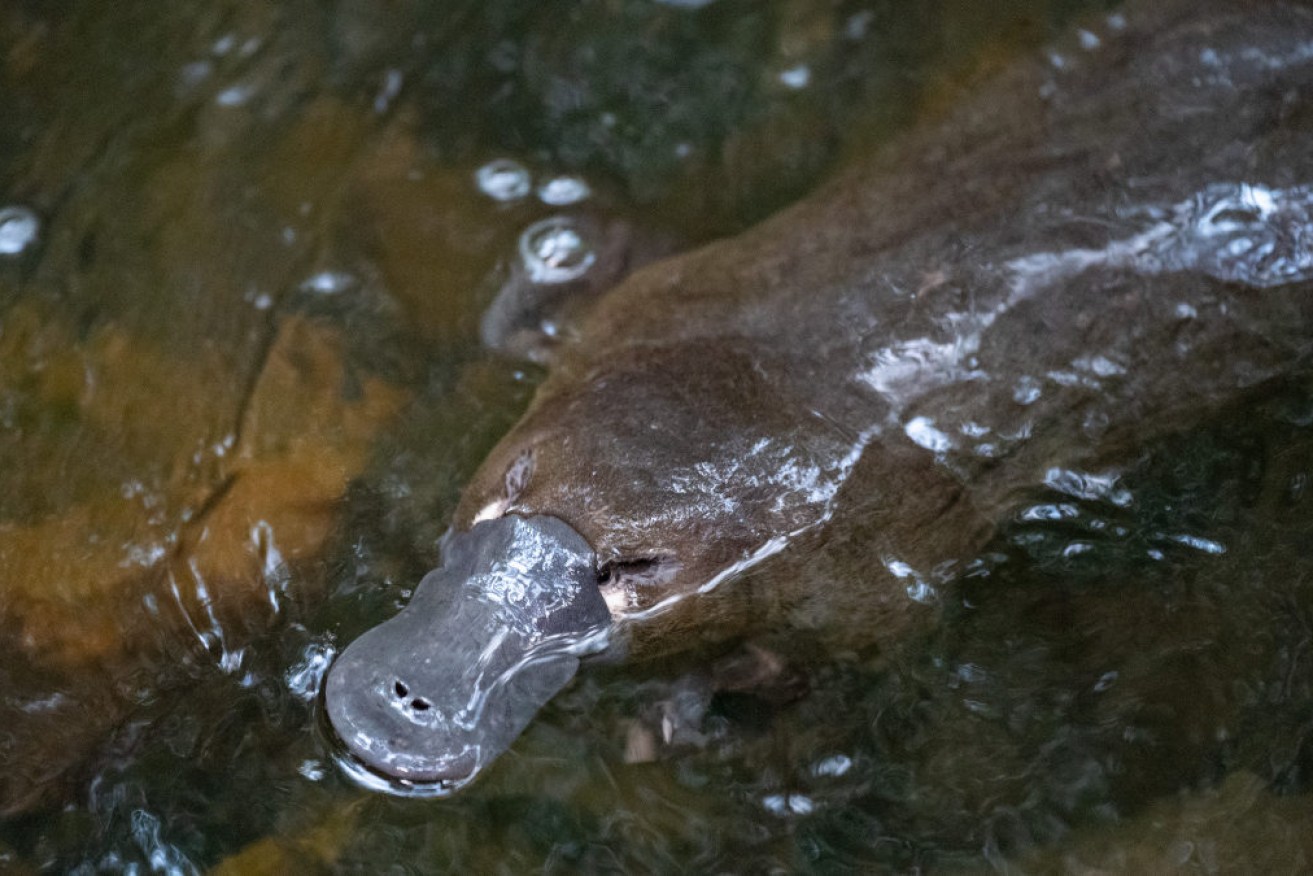‘Threatened species’ push as report shows up to a third of platypus population wiped out


A UNSW report has revealed the toll of bushfires on platypus habitats. Scientists want the monotreme protected. Photo: Pete Walsh
Australia’s platypus population has declined so drastically that scientists say the elusive egg-laying mammal should be classified as a threatened species.
The platypus, known for its paddle-shaped tail and flat bill, is being driven out of rivers at alarming rates, a report by the University of NSW shows.
Last summer’s bushfires have further threatened their survival.
The 2019-2020 bushfires took a devastating toll on Australian wildlife, killing an estimated 1.25 billion animals and destroying 10 million hectares of bush habitat.
The east coast – NSW’s south coast and Victoria’s Gippsland – was the worst-affected region.
On Monday, Federal Environment Minister Sussan Ley will announce an $18 million koala assistance package that will go towards veterinary work, habitat restoration and a ‘census’ to find out how many koalas survived after the Black Summer fires.
Considering the distressing videos and photos of burnt koalas that came out during the fires, it’s understandable public focus has been on the recovery of land animals.
The platypus, which lives in Tasmania and along the east coast of the mainland, has now emerged as a hidden victim.
Modelling by the UNSW researchers suggests about 13.5 per cent of platypus habitat was damaged by the bushfires.

It’s easy to see why photos from the Koala Hospital attracted global attention. Photo: Getty
The overall decline in platypus populations has been the most distressing in New South Wales, where scientists noted a 32 per cent reduction, and Queensland (27 per cent) since studies began in 1990.
Victoria recorded a statewide decline of seven per cent, however, there have been reductions of 18 to 65 per cent in some Melbourne catchments since 1995.
Disturbed by their findings, the scientists – along with the Australian Conservation Foundation, World Wildlife Fund Australia and Humane Society International Australia – have nominated the platypus to be listed as a threatened species under Commonwealth and NSW processes.
The assessment of species as threatened fauna or flora is the first step to promoting their recovery under Commonwealth law.
“Platypus are declining and we need to do something about threats to the species before it is too late,” said Professor Richard Kingsford, a lead author of the report and the director of the Centre for Ecosystem Science at UNSW.
“There is a real concern that platypus populations will disappear from some of our rivers without returning, if rivers keep degrading with droughts and dams.
“We have a national and international responsibility to look after this unique animal and the signs are not good.”

Conservationists are using DNA to safeguard the bushfire-affected platypus in East Gippsland, Victoria with the help of volunteers. Photo: AAP
In a statement to The New Daily, a spokesman for Ms Ley said the threatened species nomination will be considered under new processes aimed at fast-tracking the nominations of bushfire-affected species, including the platypus.
“The Morrison government has already – under the $200 million Bushfire Wildlife and Habitat recovery package – invested around $1 million into projects that support the platypus and its habitat, as well as a number of other species found in similar locations,” the spokesman said.

The platypus has waterproof fur. Photo: Peter Walsh
The elusive platypus has perplexed scientists for years.
Not only is it an important freshwater carnivore, it is one of the last remaining monotremes – or egg-laying mammals – left on Earth.
In 2010, Australian scientists discovered the semi-aquatic animal’s milk contained a protein strong enough to fight superbugs and found a hormone in their venom that could help cure diabetes.
The platypus is also an intrinsic part of many Aboriginal cultures, featuring in ancient Dreamtime stories still shared today.
But without action, we’re at risk of losing these special creatures forever.

Platypuses are nocturnal. Photo: Peter Walsh
The animals have increasingly struggled to survive in places where natural river systems and water flows have been altered by humans, like the Murray-Darling Basin.
New dams, land clearing, pollution and an increase in housing developments are partly to blame, as well as the over-extraction of water from rivers, the researchers found.
Attacks by foxes and dogs, getting caught in yabbie-catching traps, and the effects of climate change such as drought have also added to the animal’s hardship.
Endangered Australian animals at risk of extinction include the black-flanked rock wallaby, the rainbow-coloured Gouldian finch and the furry northern quoll.








